The Lexus RZ is a comfortable and quick electric crossover, but its short range disappoints in our first review
21 hours ago
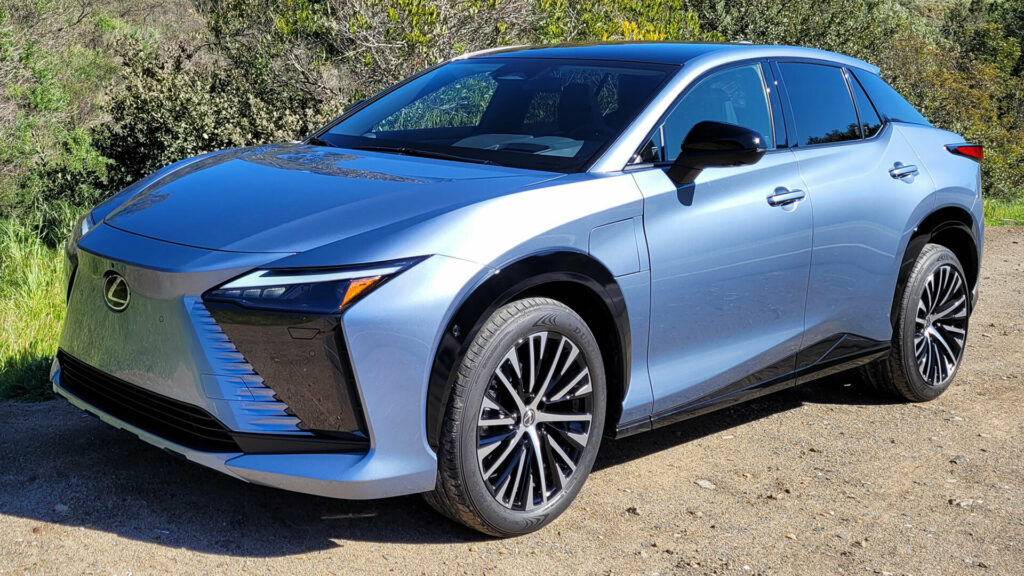
by Michael Gauthier
Electrification might seem like a relatively new phenomenon, but Lexus introduced the RX 400h nearly two decades ago at the 2004 North American International Auto Show.
The luxury crossover was just the start of their hybrid journey as the company currently offers six different models in the United States ranging from the affordable UX 250h to the head-turning LC 500h. However, Lexus is moving beyond hybrids as the electric UX 300e debuted in 2019 and was followed by the plug-in hybrid NX 450h+ two years later.
That’s a lot of history, but the company is looking to the future with the 2023 RZ 450e. It will be the first Lexus EV to be offered globally as well as their first dedicated electric vehicle. More importantly, the RZ jump starts the brand’s effort to have a fully electric lineup by 2035.
While there’s a lot riding on the RZ, the company’s hard work has paid off as the crossover makes going electric easy and the model should appeal to Lexus loyalists.
An Edgy And Aerodynamic Design
| FAST FACTS | |
|---|---|
| › MSRP: | $59,650 |
| › Output: | 308 hp and 320 lb-ft of torque |
| › 0-60 MPH: | 5.0 seconds |
| › Top Speed: | 99 mph (159 km/h) |
| › Range: | Up to 220 miles (354 km) |
| › On Sale: | Now |
While some EVs are aerodynamic jelly beans worthy of the witness protection program, there’s no mistaking the RZ for anything but a Lexus. The model has an edgy “spindle body design,” which follows in the footsteps of the RX and sports a drag coefficient of 0.29. That makes it Lexus’ most aerodynamic model as its even sleeker than the LC.
advertisement scroll to continue
The controversial spindle grille has been reimagined for the electric era and it’s effectively recreated in fully enclosed form. The look is further amplified by black accents, which mimic the appearance of aggressive air intakes.
While the ‘grille’ is fully enclosed, it’s flanked by vertical air curtains and a lower intake with an active shutter system. The model can also be equipped with an illuminated front “L” emblem, which doubles as a charging status indicator.
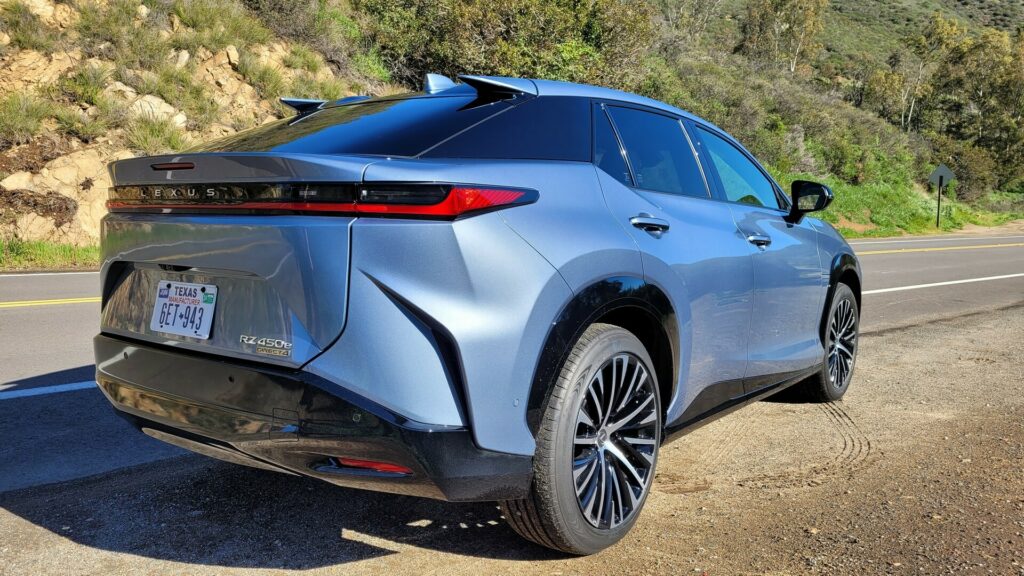
The bold styling continues further back as the RZ sports flowing bodywork, a distinctive beltline, and blacked out rear pillars. Buyers will also find LED lighting units, gloss black accents, and rear vortex generators instead of a liftgate-mounted spoiler. The latter are an interesting touch that help to improve straight-line and crosswind stability.
The RZ rides on standard 18-inch wheels, but customers can get 20-inchers and an available two-tone paint job. The latter is a $1,200 option and it sees a Cloudburst Gray or Ether body contrasted with Onyx paint that extends from the hood to the liftgate.
Customers will also find a power liftgate with a kick sensor and a two-pane panoramic glass roof. While the standard roof lacks a sunshade, customers can upgrade to a Dynamic Sky glass roof on the range-topping Luxury trim. It’s a $550 option, which enables the roof to transition from clear to opaque at the touch of a button.
In terms of size, the RZ effectively slots between the NX and RX as it measures 189.2 inches (4,806 mm) long, 74.6 inches (1,895 mm) wide, and 64.4 inches (1,636 mm) tall. Despite being 3.4 inches (86 mm) shorter than the RX, both models have a generous wheelbase that spans 112.2 inches (2,850 mm).
A Spacious Cabin That Eschews Leather And Wood
When you think of Lexus interiors, what comes to mind? If you said leather and wood, prepare to be disappointed as the RZ doesn’t offer either.
Instead, there’s a minimalist cabin that features NuLuxe or Ultrasuede upholstery as well as black or charcoal-inspired trim. They’re joined by metallic accents and “shadow illumination,” which projects a decorative pattern onto the door panels. This is a cool touch at night, but the cabin comes off a little bland and plasticky overall.
That being said, the model is tech forward as it features a digital instrument cluster and a 14-inch Lexus Interface infotainment system with wireless Android Auto and Apple CarPlay. Customers can also get subscriptions that provide cloud-based navigation, an intelligent assistant, and integrated Apple Music and Amazon Music streaming. Furthermore, Remote Connect enables owners to remotely start/stop charging, check charging status, and edit charging schedules from their smartphone.
More: 2023 Lexus RZ EV Starts At $59,650 And Offers 220 Miles Of Range
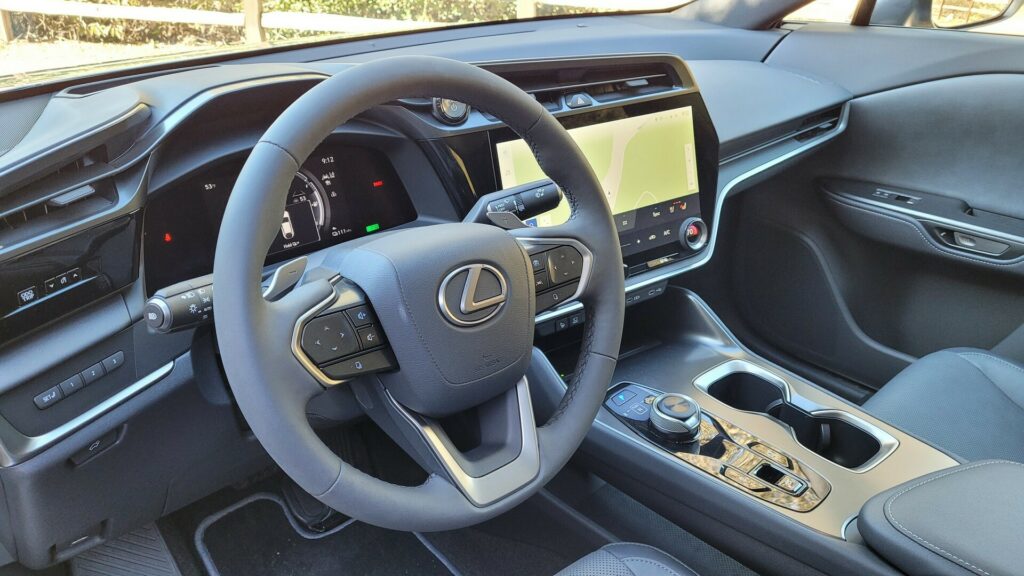
The Lexus Interface is a vast improvement over the company’s previous infotainment systems and it’s just the icing on a well-equipped cake. Even the entry-level RZ 450e Premium has a heated steering wheel, a power tilt/telescopic steering column, and eight-way power front seats with heating and ventilation. They’re joined by a wireless smartphone charger and a 10-speaker audio system.
That’s a pretty extensive list, but the range-topping Luxury adds a 13-speaker Mark Levinson premium audio system, a multicolor ambient lighting system, and a radiant knee heater. Buyers will also find heated rear seats as well as acoustic glass to keep the cabin quiet. The flagship trim also sports digital key technology and a 10-inch head-up display.
Putting equipment aside, all RZs have an accommodating cabin with tons of room front and rear. This 6’ 2” (1,880 mm) scribe didn’t have any problem getting comfortable in the second-row as there was plenty of headroom and far more legroom than the 37.5 inch (953 mm) figure would suggest. Of course, that shouldn’t be surprising as the model offers more second-row legroom than the larger RX.
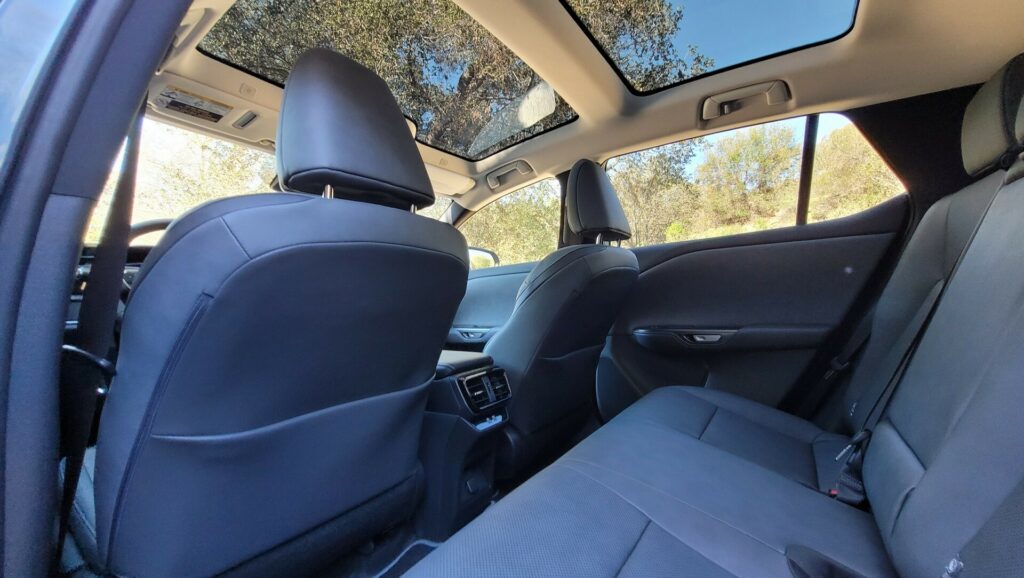
Speaking of space, the crossover holds 23.7 cubic feet (671 liters) of luggage and that can be expanded to 48 cubic feet (1,359 liters) by folding the rear seats down. It’s also worth noting the RZ doesn’t have a frunk, but there’s a small storage compartment beneath the rear load floor.
All of this adds up to a comfortable and spacious interior that feels at home in a Lexus. While it might eschew leather and wood, they’re not necessarily missed and we like the fact that the cabin is fairly conventional. This stands in contrast to the Toyota bZ4X, which tries too hard to be different.
A Dual-Motor All-Wheel Drive System With 308 HP
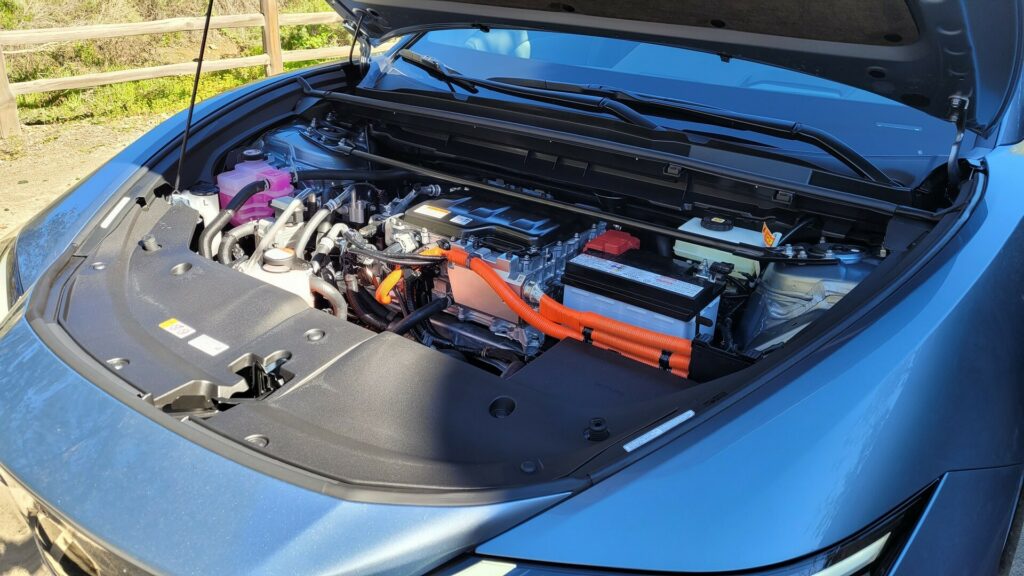
The RZ rides on the e-TNGA platform and features a 71.4 kWh battery pack that powers a DIRECT4 all-wheel drive system. The latter consists of front and rear eAxles, which each have a motor, transaxle, and inverter / power control unit. This means they can act independently and this enables the crossover to have a front-to-rear power distribution ranging from 100:0 to 0:100.
When the motors work together, they produce a combined output of 308 hp (230 kW / 313 PS) and 320 lb-ft (433 Nm) of torque. This is 94 hp (70 kW / 95 PS) and 72 lb-ft (98 Nm) more than the bZ4X, which makes a world of difference.
Mash the accelerator from a standstill and 60 mph (96 km/h) will come in five seconds flat as the electric motors instantly spring into action and feel strong off the line. Despite being quick, launches are drama-free as all-wheel drive keeps things smooth and predictable. If drivers keep their foot planted, the crossover will eventually hit 99 mph (159 km/h).
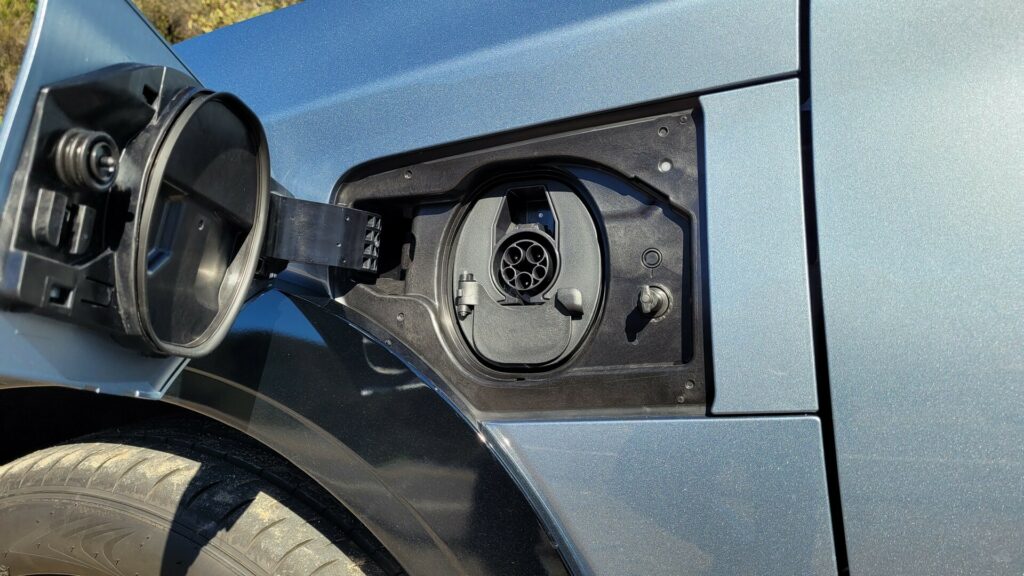
While the performance is good, range leaves a lot to be desired as the model tops out at an EPA-estimated 220 miles (354 km). However, if you spring for 20-inch wheels, the range drops to 196 miles (315 km).
That’s far less than key competitors as the Tesla Model Y offers an EPA-estimated range of 330 miles (531 km). There’s also the 236 mile (380 km) Audi Q4 e-tron quattro and 248 mile (399 km) Genesis GV60, among others.
That being said, it’s important to remember most people drive 40 miles (64 km) or less per day. However, owners will have to recharge sooner or later and the RZ comes with a Level 1 charger that can fully replenish the battery in approximately 50 hours. That’s not exactly feasible and the charger is only intended to be used as a last resort.

As a result, customers will be steered towards purchasing a $749 Level 2 charger that can deliver up to 25 miles (40 km) of range per hour and fully recharge the battery in approximately 9.5 hours. Away from home, a 150 kW DC fast charger can take the battery from 0-80% in around 30 minutes.
Lexus has partnered with Qmerit for charger installations and owners will get access to the Lexus Reserve program, which provides them with 30 days of complimentary rentals that can be used over the course of three years. This means RZ customers planning a long-distance trip can get another Lexus vehicle, so they won’t have to worry about charging away from home.
A Comfortable Cruiser That Isn’t Afraid Of Curves
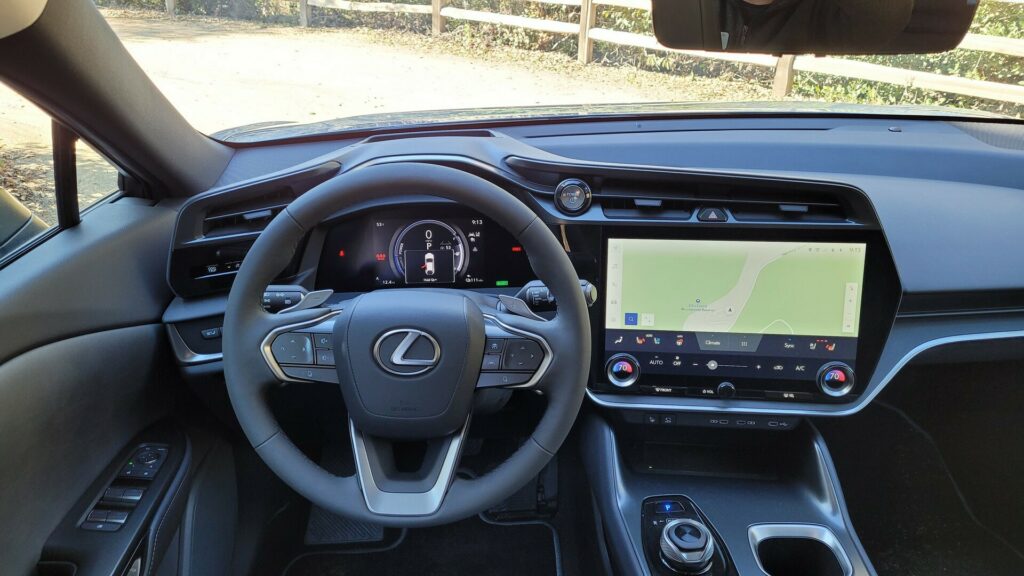
The RZ is designed to appeal to NX and RX owners, and they’ll feel right at home as the model has an unmistakable Lexus quality to it. This extends to the driving experience as the crossover features a MacPherson strut front and multi-link rear suspension that feels firm, but is more than willing to soak up minor road imperfections.
This results in a good mix of comfort and control as the RZ felt solid and secure on the winding roads outside California’s Elfin Forest. While comfort takes precedence, the RZ is a capable handler thanks in part to the battery pack which is mounted beneath the floor and gives the crossover a low center of gravity. While the battery adds plenty of heft, the model feels lighter than its 4,564 pound (2,070 kg) curb weight would suggest.
Getting back to driving dynamics, the DIRECT4 all-wheel drive system shines as it adjusts to the situation at hand. While this isn’t too surprising, the system focuses on improving the driving experience by being rear-biased when exiting corners.
The good news doesn’t end there as the electric power steering feels nicely weighted and is adjustable via the drive mode selector that has Normal, Sport, Eco, Range, and Custom settings. Range mode is all-new and focuses on eking out every last mile as it turns off the climate control system and makes the crossover rear-biased to improve powertrain efficiency.
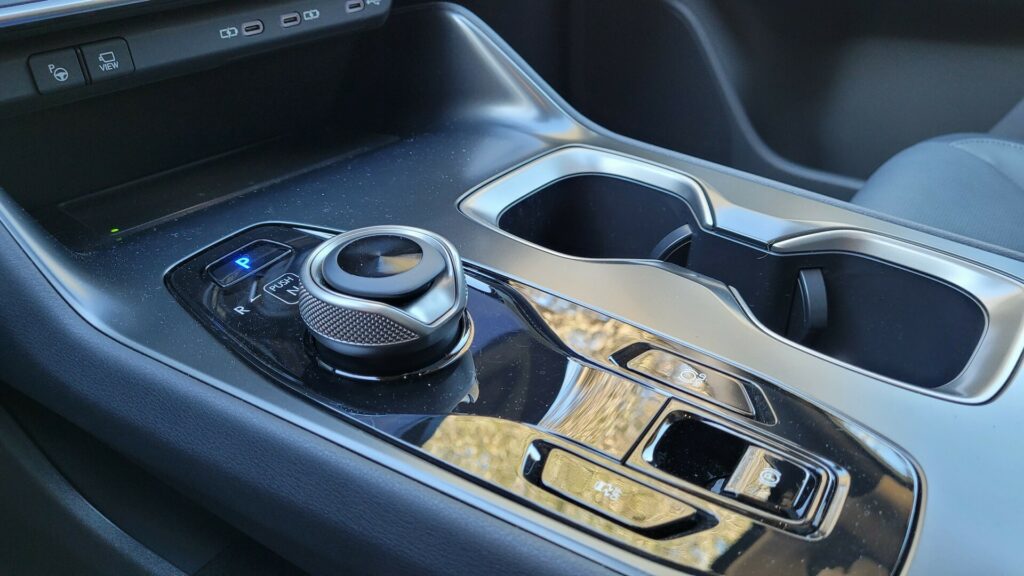
When it comes time to stop, the RZ calls on ventilated discs that measure 12.9 inches (328 mm) front and 12.5 inches (317 mm) rear. They’re perfectly capable, but that’s only part of the story as the RZ comes with an all-new Vehicle Braking Posture Control system that “adjusts front-to-rear brake force distribution according to a driver’s braking input as well as the suspension’s vertical inputs.” The model also has a new Active Hydraulic Booster-G braking system, which “works with the DIRECT4 system and RZ’s regenerative motor capability to reduce vehicle speed while helping to improve vehicle posture.”
If that wasn’t enough braking doodads, the RZ has steering wheel-mounted paddle shifters that adjust the amount of regeneration. There are four different settings to choose from and the strongest has a pronounced impact as soon as you lift off the accelerator. The lowest setting delivers a more traditional experience, while the two settings in between offer the best mix overall.
The RZ comes standard with a Lexus Safety System that includes a Pre-Collision System with Pedestrian Detection, Risk Avoidance Emergency Steer Assist, and Left Turn Oncoming Vehicle Detection and Braking. Buyers will also find Adaptive Cruise Control, Lane Tracing Assist (Lane Centering), Lane Departure Alert with Steering Assist, Road Sign Assist, and Proactive Driving Assist.
The model can also be equipped with Advanced Park and Traffic Jam Assist. The latter works at speeds under 25 mph (40 km/h) on limited access highways and provides a hands-free driving experience as the RZ handles steering, braking, and acceleration. The vehicle will also automatically come to a halt if traffic stops and it will resume when traffic starts moving again.
A Lexus For The Electric Era
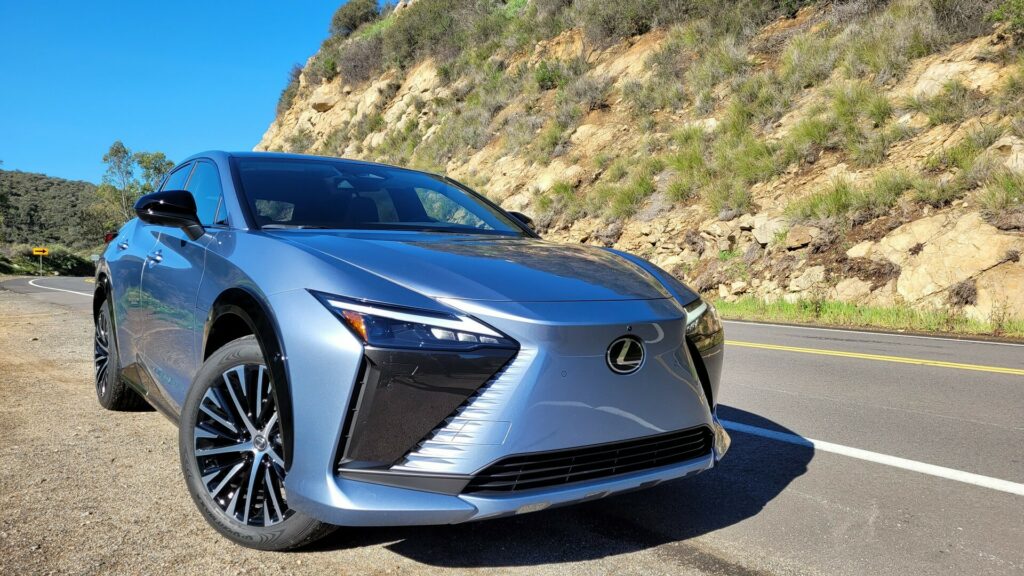
Going electric can be scary and officials noted there’s a “steep learning curve” for those not familiar with EVs. Lexus took this into consideration when developing the RZ, so they created a crossover that’s familiar and will make the transition to electric vehicles easy.
This is a good approach as the RZ looks, feels, and drives like a Lexus. While the powertrain might be different, everything else should be familiar to current owners.
That should make the RZ appealing to Lexus loyalists and that’s before factoring in the comfortable ride and powerful dual-motor all-wheel drive system, which leaves the RX in the rearview mirror. There’s also a spacious and quiet cabin with an impressive list of standard equipment.
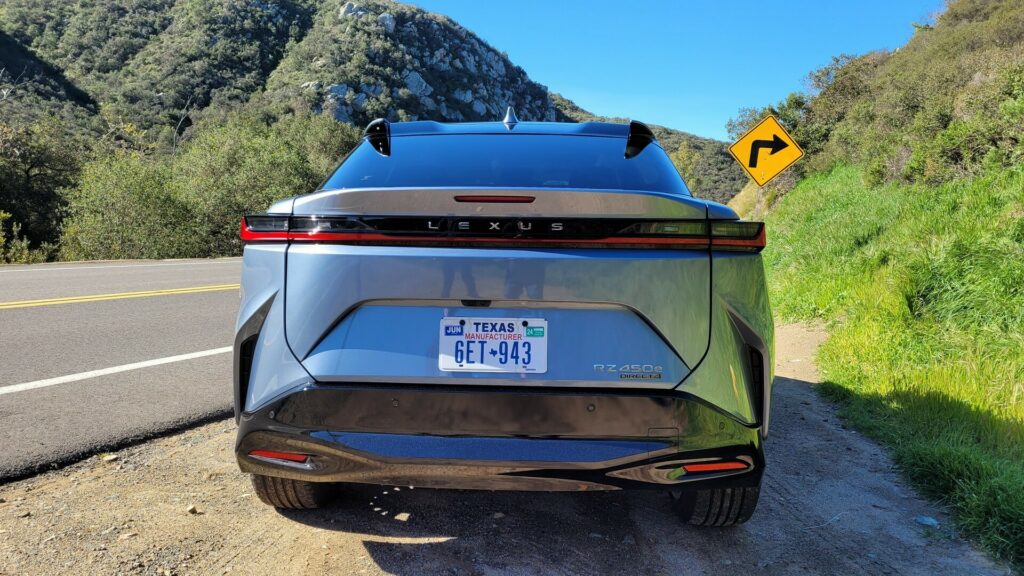
While the RZ has a lot going for it, it also has two big demerits. The 220 mile (354 km) range lags behind competitors and it falls to 196 miles (315 km) with 20-inch wheels. That’s not great, but pricing will likely be the crossover’s biggest problem.
The RZ 450e Premium starts at $59,650 and climbs to $65,150 for the Luxury trim. That’s not bad on the surface as both trims come nicely equipped, but the RZ isn’t eligible for a $7,500 federal tax credit.
This makes the crossover a tough sell as the excellent Cadillac Lyriq starts at $58,590 before factoring in the incentive. The Tesla Model Y is also the elephant in the room as it’s eligible for the credit and is cheaper to begin with.
That leaves the Lexus RZ in an awkward spot, but there’s still a lot to like and the model is a promising preview of the brand’s all-electric future. The crossover is currently on sale and will be available in all 50 states, unlike some competitors.

ivermectin india – candesartan cheap order tegretol sale
purchase accutane generic – oral accutane 10mg order zyvox without prescription
cheap amoxicillin pills – buy cheap diovan ipratropium 100mcg usa
buy cheap omnacortil – prometrium 200mg cheap prometrium 200mg for sale
cheap neurontin 100mg – purchase anafranil sale buy itraconazole 100mg pills
augmentin for sale online – amoxiclav pill cymbalta 20mg cheap
vibra-tabs generic – glipizide sale glucotrol over the counter
buy rybelsus 14mg generic – purchase cyproheptadine online cheap periactin for sale online
order tizanidine generic – where can i buy zanaflex order microzide 25mg pills
tadalafil without prescription – buy tadalafil 10mg for sale viagra us
cheap sildenafil online – sildenafil 50mg ca tadalafil 20mg tablet
lipitor 10mg us – zestril 2.5mg ca buy lisinopril pill
prilosec 20mg usa – buy lopressor sale tenormin 100mg generic
order depo-medrol generic – buy lyrica 150mg for sale aristocort for sale
order desloratadine online cheap – buy dapoxetine 90mg without prescription order priligy pills
oral cytotec – order misoprostol for sale buy diltiazem 180mg for sale
order acyclovir online – acyclovir online buy crestor drug
buy cheap motilium – brand motilium 10mg buy cyclobenzaprine 15mg online cheap
domperidone 10mg uk – tetracycline 250mg over the counter order generic cyclobenzaprine 15mg
buy inderal 10mg sale – order generic methotrexate 10mg buy methotrexate 10mg generic
buy coumadin 5mg without prescription – order losartan for sale cozaar 50mg for sale
buy generic levaquin 500mg – order dutasteride generic oral ranitidine 150mg
buy meloxicam 15mg pills – flomax usa buy flomax cheap